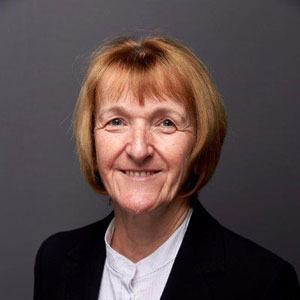The NIHR SRMRC’s first industry awareness event successfully brought representatives of commercial companies into contact with trauma researchers and clinicians at the Queen Elizabeth Hospital Birmingham.

The event, run in association with Medilink UK, saw leading trauma researchers and clinicians present some of their major challenges, from neurosurgical drug monitoring to the difficulties of long-term rehabilitation.
SRMRC director Professor Sir Keith Porter opened the event, providing an overview of the challenges of treating trauma patients in both the civilian and military worlds.
A national leader in planning pre-hospital care, Prof Porter explained how military patients now receive world class care from the moment of injury on the battlefield to their later treatment at the Queen Elizabeth Hospital Birmingham (QEHB). However, the challenge now is to bring into the NHS the systems which make this success possible.
Neurosurgeon Professor Garth Cruickshank then spoke about the particular difficulties faced with delivering drugs to the brain, which is protected by the blood-brain barrier. This barrier limits the susceptibility of brain to blood-borne agents.

While this is important in protecting the brain from infections, it also prevents clinicians from delivering many useful drugs to the brain by traditional intravenous methods.
As a result, there is an opportunity for industry to work with clinicians and researchers on delivery methods for these important drugs, which can help the brain to heal after injury or reduce the risk of infection.
This could include ways of physically bypassing the blood brain barrier entirely by implanting drugs or by developing new drug delivery agents which are able to pass the barrier.
That was followed by a talk by Ugochi Nwulu, who explained the role of the Prescribing and Information Communication System (PICS) in monitoring patients at the bedside. This identified opportunities to improve the integration of such systems with patient records to enhance patient care.

Clare Travis, QEHB’s Occupational Clinical Lead in Burns for Neuro and Trauma, then provided an overview of the challenges posed in helping to rehabilitate patients who have suffered a serious trauma.
In looking to industry to provide solutions, she highlighted the success of a recent collaboration with BAE Systems. The video camera-based system provided improved visibility and communication for patients who must lie flat in bed.
There followed presentations on the SRMRC’s three research themes by Maj Mark Foster (Acute Response to Injury), Dr Beryl Oppenheim (Microbiology) and Mr Tony Belli (Regenerative and Reconstructive medicine).
Maj Foster discussed the SIRS study, which closed recently after successfully recruiting 100 serious trauma patients.
Dr Oppenheim, who leads the Microbiology theme with Professor Mark Pallen, talked about the latest developments in microbiology technology and how they are helping to create “Microbiology 2.0” by embracing DNA sequencing to identify and track infections.
“Owing to new technology we are on the cusp of a completely new approach to diagnosing infections,” she said. “Traditional diagnosis takes a long time and not all germ will grow using the old techniques.”
She identified the development of benchtop DNA sequencers, novel anti-microbials and antibiotics, and new cleaning agents as the key elements in the future of microbiology
Mr Belli provided an overview of the encouraging state of research into traumatic brain injury (TBI): “in the last few years we have seen increased financial support for trauma research in general and neurotrauma in particular. ” “There has also been renewed interest from pharmaceutical companies in TBI.”
He identified the key challenges for treating these patients as timeliness of treatment, capacity and rehabilitation: “There are still significant delays in treating TBI, but these injuries need to be treated as a life threatening injury.”
The afternoon session featured breakout sessions which enabled industry representatives to focus in on specific areas of trauma research with relevant clinicians and researchers.
The day concluded with a presentation by Prof Richard Lilford highlighting the importance of health economics at the supply side when evaluating new medical devices.



